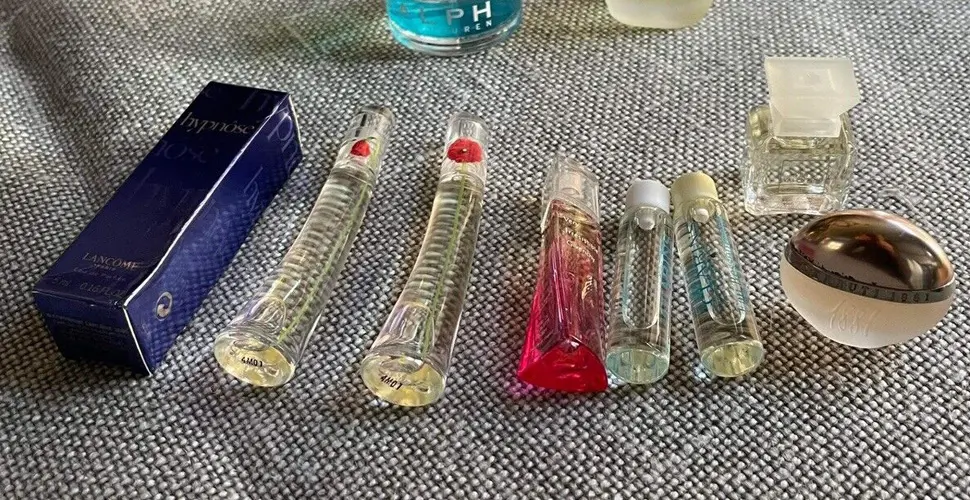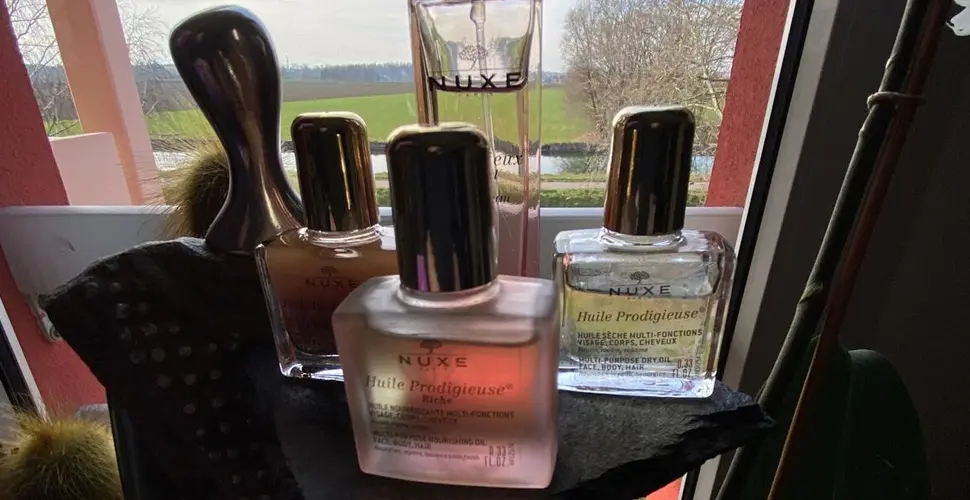Is it safe to mix fragrances or should I stick to just one scent?
Deana Stallings
- 04 Jan 2023

Introduction
Depending on the type of scent and the mixing process, mixing perfumes may or may not be safe. Generally speaking, it is acceptable to combine different fragrances, including oils and essences, as long as the user is familiar with the constituent aromas and knows how to correctly blend them to achieve the desired result. For a nice and calming scent, one might combine natural oils like lavender and jasmine.
However, combining an excessive number of perfumes could result in a murky and overbearing scent. Therefore, sticking to one perfume is advised because it gives you the freedom to experiment with a lighter, more delicate scent. Additionally, improper scent combination could result in skin sensitivities if proper precautions are not performed.
Before blending several perfumes to suit one's personality, one should consult a specialist. Furthermore, it is possible to combine different scents in a single product thanks to specially formulated perfumes from well-known brands. Therefore, combining scents to create a unique scent is completely safe, depending on the ingredient and the consumer.
Popularity of layering
In recent years, layering scents has grown in popularity. The desire of consumers to generate distinctive scents for themselves has become a trend in the beauty and fragrance industry. Using different scents in combination to produce something distinctive and individual is known as layering perfumes. Both organic and synthetic chemicals can be used to accomplish this.
The ease with which people can experiment and develop their own distinctive aromas is one reason why layering fragrances has become so popular. Those who want to use aroma to communicate their unique sense of style will find this very enticing. Additionally, layering scents allows the wearer to alter the scent's intensity in different settings, extending the wearability of a single fragrance.
The allure of layering fragrances comes from the fact that it is an accessible and inexpensive approach to make a variety of distinctive aromas. You can mix different fragrances at home or buy them already mixed. Additionally, layering fragrances allows people to taste a range of aromas without having to buy pricey perfumes because only a few basic fragrances are needed.
It's crucial to check that the odors blend well together rather than clashing when stacking scents. Most fragrance blends benefit from a light and airy base note like lavender or rose, and then heavier notes like jasmine and sandalwood can be added for depth and richness. When layering scents, a decent rule of thumb is to pick no more than three.
Finally, layering fragrances enables people to fully express their creativity through the use of their own distinctive scents. The options for creative fragrance mashups are essentially limitless as layerable smells become more affordable and widely available. As a result, customers can design distinctive scents that reflect their personalities, tastes, and sensibilities.
In the end, the appeal of creating distinctive and customized aromas is what makes layering fragrances so attractive. It gives people the ability to express their own styles through aroma while also enabling them to start on a creative path of exploration in search of the ideal fragrance blend.
Potential health concerns
Compounds utilized in the production of colognes, perfumes, and other personal care items are known as fragrance ingredients. The term "fragrance" refers to a group of compounds used to give a product a pleasing scent. Ingredients for fragrances can come from plants, fruits, and spices, or they might be chemically manufactured in a laboratory.
Ingredients in fragrances might potentially raise health issues. Hundreds of components make up fragrances, many of which may not be listed on the packaging. Some of these components have been linked to unfavorable medical outcomes, including allergies and even cancer. According to studies, some of the most popular scent components include phthalates, which can interfere with hormone production, and synthetic musks, which build up in the body.
It's critical to read product labels carefully and be aware of any potential health risks linked to fragrance components. The phrase "fragrance" on a product label may refer to hundreds of different substances, some of which may be potentially harmful. Consumers should be aware of this. Customers can also search for items marked "unscented" or "hypoallergenic," as these are less likely to contain known allergens.
Fragrance chemicals can give personal care items a pleasing scent, but they can also have negative health effects. Customers should be aware of these possible hazards and carefully read product labels. Customers should also search for items that are marked as "unscented" or "hypoallergenic". Consumers can help to lower their risk of exposure to potentially dangerous compounds in fragrance goods by adopting these precautions.
Risks of mixing fragrances
For customers, combining scents can result in a distinctive and pleasant perfume, but there are also potential dangers and safety issues to take into account. Fragrances frequently contain a number of chemicals, some of which may cause discomfort or allergic reactions. Itching, redness, swelling, and breathing problems are all symptoms of allergic responses, which can range in severity from moderate to severe. They may be brought on by certain components or even specific mixtures of components in a fragrance.
To help ensure that only safe scents are made available to consumers, the fragrance business has several safety measures in place. However, not all perfumes are risk-free because they include a variety of substances that could interact negatively. The potential hazards of combining scents, including allergic reactions and skin irritation, must be understood.
When applying perfumes, those with sensitive skin are especially vulnerable to an adverse reaction. The fragrance's allergens may cause a reaction that manifests as an itchy, red rash. Users of fragrances should be informed of any potential dangers associated with utilizing particular chemicals or compound combinations. People with sensitive skin should also exercise caution when combining different aroma oils because the results can be unpredictable.
It's also crucial to remember that some ingredients can result in more severe reactions. Contact dermatitis, which can manifest as burning, itching, blisters, and even a persistent rash, is one of the most prevalent. People who are extremely sensitive to perfumes because of allergies or other health issues need to be aware of these possible dangers.
Finally, it is important to remember that prolonged exposure to perfumes might irritate the eyes and respiratory system. Fragrances can exacerbate breathing problems, which can result in respiratory tract infections and, in people with asthma, an asthma attack. It's crucial for people with asthma to stay away from scented goods in order to reduce their chance of starting an attack.
Overall, combining fragrances can give consumers distinctive, pleasing smells, but it's vital to be mindful of the risks involved with employing perfumes. Customers should be aware of these possible safety issues since certain substances or combinations of ingredients might cause allergic responses and irritation. It's also crucial to use scents with additional caution if you have sensitive skin or health issues like allergies or asthma.
Natural and synthetic compounds
Chemicals called fragrance compounds are used to give cosmetics and home goods a particular scent or aroma. Fragrances can be manufactured or natural and can include up to 200 different components or compounds. These substances may come from various sources, including synthetic compounds, animal fluids, plant extracts, essential oils, and other sources. These substances work together to produce a distinctive and frequently alluring aroma.
Because they have the ability to irritate the skin or respiratory system, fragrance components can have both beneficial and bad effects on a person's health. Natural fragrance ingredients, such as those made from plant extracts and essential oils, may be less prone to irritate skin, but they still have the potential to irritate some people. Contrarily, synthetic scents have the potential to include significant levels of sensitizing elements (such as phthalates) that, when inhaled, might irritate the respiratory system and cause skin irritation.
When it comes to skin irritation, scent compounds can induce contact dermatitis if used in extremely concentrated form. They can also cause skin redness and itching when applied directly to the skin. Fragrances can also make skin less elastic, which causes premature aging. Fragrances can irritate and harm the lining of the lungs, which can cause inflammation and, in certain circumstances, symptoms connected to asthma. Additionally, some perfumes may contain volatile organic compounds (VOCs), which can harm the respiratory system even more.
Ingredients for fragrances should be carefully chosen and applied sparingly in terms of safety. It is best to speak with an allergist or dermatologist before using any fragrance compounds to ensure there won't be any adverse reactions. Furthermore, it's critical to read product labels in order to spot any possible allergies, sensitizers, or irritants. Finally, it's crucial to keep personal care items and scents out of children's reach because some kids may be allergic to or sensitive to specific fragrance elements.
Perfumes can be a pleasant addition to personal hygiene and house maintenance, but it's crucial to be aware of any potential health risks associated with fragrance compounds before using them. People can be sure to take advantage of the pleasant and secure advantages that scents can provide by conducting the necessary research and taking any hazards into account.
Tips for minimizing the risks of mixing fragrances
While combining complementary scents can be appealing, there are certain dangers involved. Particularly when combined with other smells, fragrance compounds like certain essential oils, synthetic musks, and alcohol-based fragrances can irritate the skin or even trigger allergic reactions. There are some precautions that can be done to reduce the hazards associated with combining perfumes.
-First and foremost, it's crucial to understand which substances could potentially be harmful. Stay away from substances such specific essential oils, fake musks, and other known irritants.
-Second, stay away from stacking fragrances that have opposing notes. Unpleasant smells that are readily overpowering to the senses can be produced by layering various perfumes with contrasting overtones (i.e., same scent but different components). Make sure to mix the perfumes in little amounts if you decide to stack them.
-Third, pay attention to where you apply each scent. Avoid applying perfume to delicate body regions like the area around the lips, eyes, and face. Additionally, it's crucial to exclusively use fragrance-free products to certain body parts.
-Fourth, refrain from applying excessive fragrance. Never spray the fragrance directly onto your skin; instead, use a small amount of each fragrance you decide to combine. Your likelihood of experiencing an allergic reaction may rise as a result.
-Finally, give the scents time to interact with one another. It can take some practice to acquire the proper fragrance mixture. In order to get the ideal smell, patience is essential.
Combining perfumes can be enjoyable and rewarding, but it's crucial to exercise discretion. Take into account these suggestions to reduce the dangers of scent blending and make the most of your fragrant combinations.
Guidelines for choosing safe and healthy fragrances
Fragrances are common things used to make someone smell good and to make a space seem welcoming. However, a lot of the fragrances available today include poisonous components and can be bad for your health, making it challenging to pick the proper one.
Start by choosing perfumes that are natural and organic. As opposed to conventional scents, they may be specifically labeled, so search for words like "natural," "organic," "botanic," or "pure" to be sure the product is not hazardous. Additionally, be wary of any marketing terminology that uses the word "green," as this does not always imply organic.
Although the individual ingredients in organic and natural perfumes are frequently not required to be listed on the label, it is always a good idea to double-check. It is crucial to understand what you are purchasing and applying to your skin. It could be wise to avoid the item if the ingredient list is ambiguous or nonexistent entirely.
Last but not least, think about the brand's reputation. Unexpectedly, the regulation of perfumes and fragrances is weak. To make sure you are purchasing a reliable and secure product, be sure to study the brand and read reviews. Avoiding new or obscure brands is a good idea because they might not uphold the same standards as more established ones.
When selecting a scent, these recommendations can assist keep you secure and healthy. Prior to making a purchase, look for natural or organic products with clear labels and assess the brand's reputation. This will guarantee that you make an informed selection and help you feel more at ease.
Conclusion
It's crucial to always patch test and exercise caution while attempting new perfumes. Applying a little amount of the fragrance to the inside of your wrist or elbow and waiting several hours to see if any adverse reactions happen is known as patch testing. By doing this, you can find out if the fragrance causes skin irritation, an allergic reaction, or any other discomfort. Stop using the product and seek the advice of a dermatologist or healthcare provider if you come into touch with any preservatives or pigments that you are sensitive to.
Before using any new scents, you should always consult your doctor if you have any worries, such as allergies. Even after a patch test, some scents still have the potential to induce an allergic reaction. Additionally, some perfumes can be irritating to the skin, so people with sensitive skin should see their doctor for advice before trying a new fragrance.
While smelling nice, it's crucial to always be aware of the hazards associated with fragrances. Always remember to patch test and proceed with caution while attempting a new smell, and if you have any worries, always seek the advice of a dermatologist or other healthcare provider. You can choose the ideal scent for you by following some easy procedures and being aware of the potential risks.


